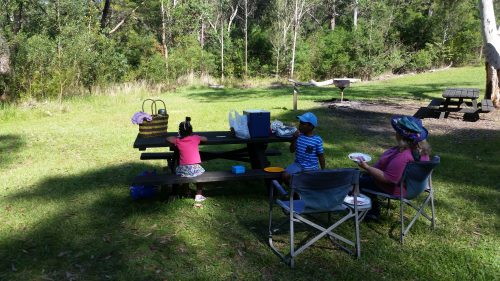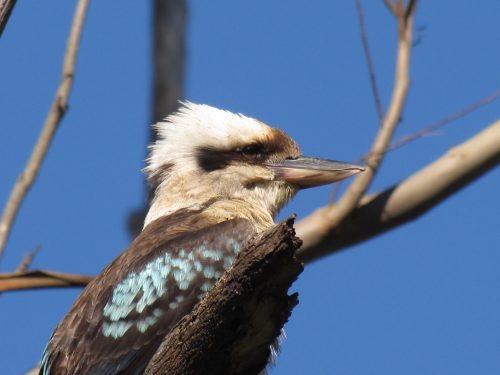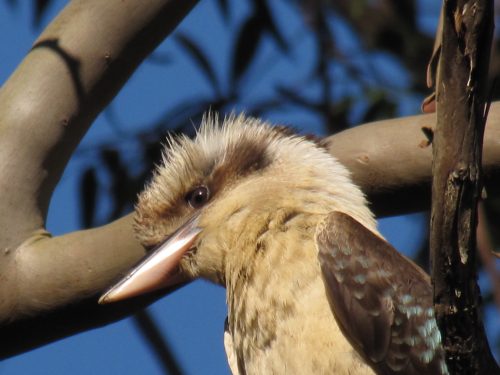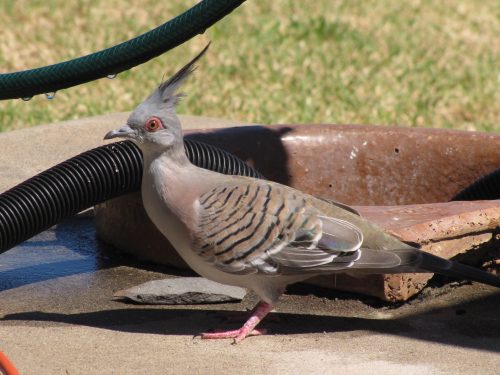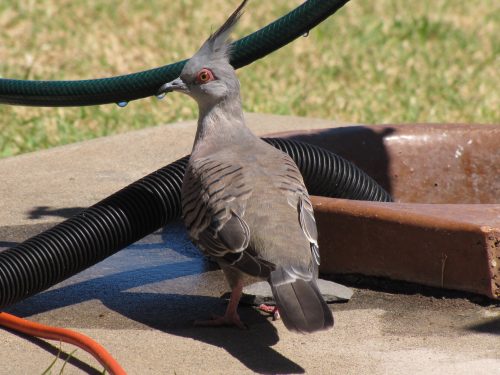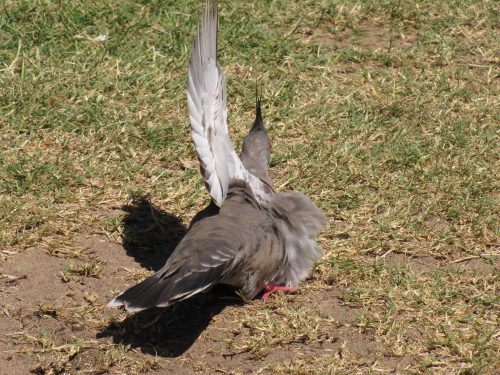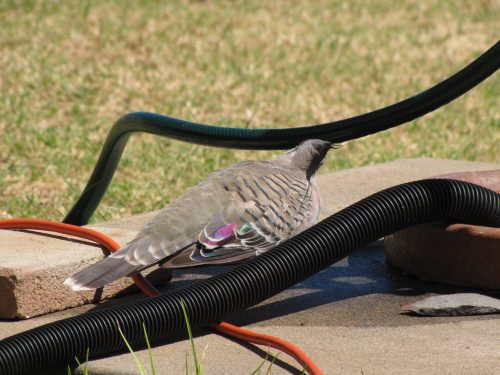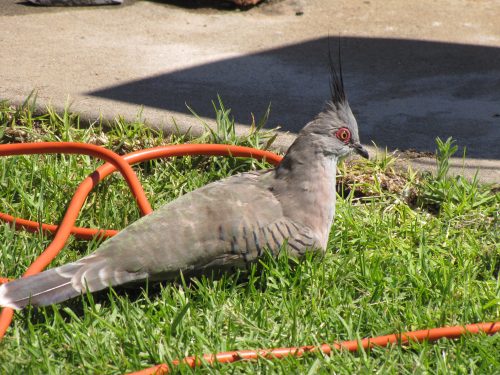That’s not what I expected
Yesterday, my wife and I took our two grandchildren, ages 8 and 5, on a picnic. We are currently staying with them here in Sydney during the school holidays. They are very energetic children and they needed to run off a little steam, so we took a picnic lunch, some balls, my binoculars, my grandson’s binoculars(he is starting to develop an interest in birds), our folding chairs, my camera and a thermos for a cuppa. And some treats from our favourite local bakery.
Lane Cove National Park
We drove the short 10-minute journey to this wonderful national park, just a short distance west of Chatswood. We set up for our picnic and enjoyed some barbecued sausages and the treats from the bakery. It was a clear day with the temperature in the mid-20s – perfect for a picnic. After lunch, we involved the children in a few games. These included searching for various natural objects such as finding three different kinds of leaves. They were quite entertained, especially when I suggested some running races. They are both excelling at Little Athletics so they enjoyed making up a short course and getting me to time their efforts while I had my cuppa. Too easy.
Slow birding
Meanwhile, the birding side of things was rather slow. Sure, the obligatory Laughing Kookaburras were perched nearby, just waiting for an opportunity to sweep down and snatch our food (see photos below). Small flocks of Rainbow Lorikeets streaked overhead, or squabbled noisily in nearby flowering gum trees (eucalypts). We heard the occasional Pied Currawong calling, along with several Australian Ravens. Two Australian Black-backed Magpies were quietly feeding on the grassed area opposite us, and I heard a number of Yellow-faced Honeyeaters in the nearby trees, though I did not get a good look at them. All very quiet and peaceful – just right for a relaxing afternoon.
An unexpected bird
Just as I was finishing my cuppa, a small flock of Noisy Miners (a native honeyeater species) started calling very noisily near the top of a nearby tree. I stood up and moved closer, training my binoculars on the spot where a hawk-like bird had landed. It was being severely harassed by the miners. I raised my binoculars and immediately identified it as a Pacific Baza. I had a good view for several seconds, long enough to identify it and to take a few photos before it flew off.
Photos
Alas.
My camera was twenty metres away on the picnic table next to where I had been sitting – so no photos.
Botheration!
In my haste to see the bird, I had clean forgotten to pick up my camera. This is rather sad because I would have loved to have taken a photo of this species. This is only the second time I can recall seeing this bird; the other time was several decades ago in northern New South Wales, well before I started bird photography. I cannot be absolutely sure about this earlier sighting because all of my notebooks are at home, some 1400 km or two days’ drive away.
Pacific Baza
This species is found along the coastal regions of New South Wales, Queensland, Northern Territory and northern Western Australia. It is quite common locally but on this occasion, I only saw the one individual. This is about the southernmost extension of its range, and they are rarely sighted south of Sydney.
They are one of Australia’s easiest hawk species to identify, with a small crest and bright stripes across their chest. You can see several photos here, as well as more information about the species.
Meanwhile, here are two photos of the Laughing Kookaburras which sat watching our food in the hope of snatching something.
Good birding,
Trevor
More about Crested Pigeons
In my last two posts (here and here), I wrote about a small flock of Crested Pigeons which I photographed last month. This was on a short weekend stay in the Brighton Caravan Park in the southern parts of Adelaide in South Australia. This small group of pigeons came near to us while we were sitting outside our caravan having lunch on one of the days. They stayed long enough for me to quietly go into the caravan to get my camera and then back to my seat to take some photos.
All the time I was shooting them, they sat on the grass only a few metres away. Several of them were enjoying the dripping tap which was connected to the hose leading to our van. It was a warm day and the birds even sat in a small puddle of water on the concrete slab around the tap. For the rest of the time, they were either sitting on the grass sunning themselves, or pecking away at the grass all around our site.
I have found over the years of photographing birds that this species is often very easy to approach. They are generally not all that scared of humans nearby. In caravan parks, they are even easier to get close to than normally because they are used to large numbers of people all around, as well as plenty of car, bike and scooter movements. None of this seems to frighten them, making them easy to observe up close and also to photograph them. All very convenient to likes of me with my camera.
One of the disappointments of this set of photos (and those in the previous two posts), is that the iridescent colours on the wings do not really show up well. When the sunlight is coming in at the correct angle, the colours shine up brilliantly. What does show up in the photos today is the striping on the wings of the birds. At first glance, this species appears to be plain in colouring, but closer up there are subtle colourings and markings on their plumage.
Crested Pigeons like to sun themselves
In my last post, I wrote about a recent visit to the Brighton Caravan Park in the southern parts of Adelaide in South Australia. We were staying with several other couples who had also brought their caravans. This lovely park is adjacent one of Adelaide’s best beaches – and there are many wonderful beaches along this stretch of coastline. Our caravan was situated with a good view of the ocean, and only a few steps to the beach.
Over a four day stay at the park, we had many opportunities to just sit a chat with our friends, or gaze out to sea. On the Sunday, we were sitting in the shade of our friend’s caravan having lunch. The park was relatively quiet at that time and a small flock of Crested Pigeons came near to us. They were initially interested in the dripping tap near our van. This tap was attached to the water supply leading to our van. It was quite a warm day and the birds appreciated a little extra water (see photo below).
One of the pigeons decided that it was time to sit in the sun and take advantage of the warm sunlight (see photo at the top of this post). I have seen many birds sunning themselves in this fashion. I wrote a detailed article about this habit here. In this other article, there is a link to a more detailed article on why birds indulge in sunbathing or sunning themselves. In short, it appears that they are trying to rid their plumage of lice.
I guess it also feels nice.
Good birding,
Trevor
Further reading:
